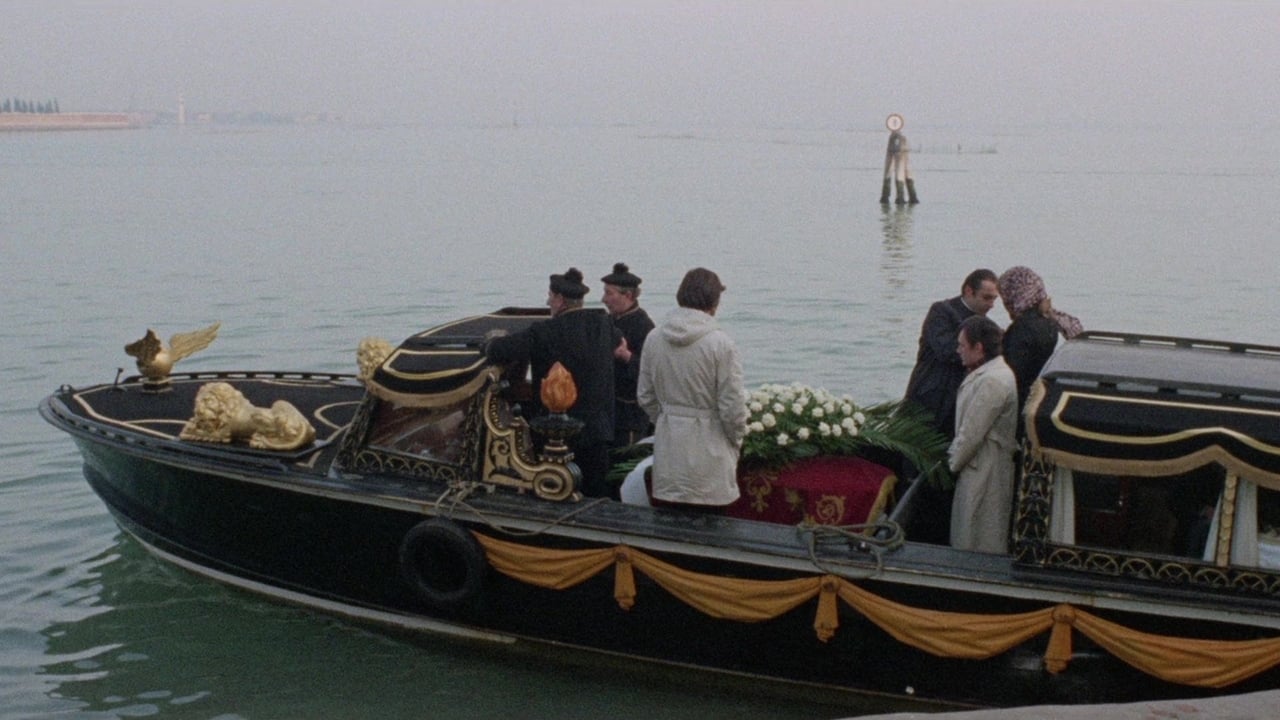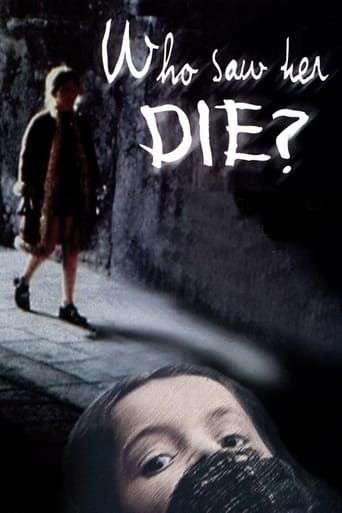

Arriving in Venice from a vacation, a separated couple finds that their daughters' death is a part of a larger conspiracy when their investigation into the incident brings them in contact with a seedy underground in the city and race to find the true killer before he strikes again.This was quite the enjoyable if slightly overrated Giallo. When this one works, it's in the details of the film's central premise involving the abduction and eventual discovery of their daughter. The sequence where it takes place, featuring her playing with the other children in town only to have the ominous figure watching all along and striking when she's alone, while his frantic search around the city to find her resulting in the exceptionally disturbing and shocking centerpiece sequence of the body being discovered in the middle of the canal. That is quite an impressive sequence and readily steals the show with its impact and grief, as well as their impending relationship that's brought out of the sequence as their clumsy and inelegant attempt at lovemaking following the requisite funeral makes for a nice completion to this arc of the story. Beyond this, it does go for a couple of impressive stalking scenes here which are quite thrilling, from the suspected sequence of the killer in their apartment bathroom before a nice false scare, a more thrilling stalking in a crowded movie theater where the striking killer appears during a showing and offs the suspect in the middle of the packed audience without anyone noticing and several frantic foot-chases through the city's underground buildings and streets that all ends with a fantastic encounter in an under-construction building. The fine finale, taking place in a large church full of differing corridors and floors is an endlessly chilling series of set-pieces full of nice interplay with the darker shadows revealing the killer coming after them and resorting to some fine attempts at hiding away before the final reveal is made which gives this quite the effective and startling finish. While these here are what give this one some of the more enjoyable and atmosphere elements, there's a pretty big and damaging flaw that does lower this one significantly. The biggest issue here is the fact that there's just not a whole lot of action within here where the film slows down considerably after the main strike occurs as this one becomes quite stilted featuring an endless series of scenes showing them first reconnecting before going into their investigations which are so dull and dragging that film sloughs through its middle portions. The body count is so low for these types of efforts that it really highlights the lack of action to be found here as so many of these scenes are brought up and then pushed aside without much effort in connecting the events to the central storyline, so not only is the pacing dull but there's just not all that coherent a storyline. Trying to piece out the killer's rationale and motive is next to impossible to piece out which does nothing to help the action here as it doesn't really make sense what's going on and it's not that interesting anyway so it does come down after that opening. While it does have some solid work here, there are some flaws to hold it back.Rated Unrated/R: Nudity, Violence, Language, sex scenes and the intense theme of violence-against-children.
... View More"Who Saw Her Die?" starts with the murder of a young girl on a snowy mountainside. This sets the bleak tone for the first half-hour of the film. We go to another young girl, whose parents are played by George Lazenby and Anita Strindberg. The girl is stalked by an unseen stranger while her parents remain oblivious. Even if you can predict what is going to happen to her, the suspense becomes almost unbearable. This section of the film is excellent.At approximately the 32-minute mark, there's a sex scene between Lazenby and Strindberg. I highly advise you to stop watching at that point, because the whole film falls apart quite rapidly from there. All the suspense that was built up until this moment dissipates into boredom, and Lazenby spends most of the remainder of the film wandering around aimlessly. The film plods along until it reaches its laughable conclusion. It's so bad that it almost retroactively ruins the first part.If you feel the need, imagine your own ending. It couldn't possibly be worse than the one they came up with.
... View MoreTo my shame, I've yet to see Nicholas Roeg's celebrated 1973 classic Don't Look Now, which by all accounts was heavily influenced, both thematically and stylistically, by this lesser giallo by Aldo Lado (The Night Train Murders, Short Night of the Glass Dolls). I can only hope that Roeg's film doesn't prove equally as disappointing...Boasting decent cinematography, a brutal veiled killer who thinks nothing of killing kids, and a haunting Ennio Morricone score, Lado's film possesses an undeniably unsettling atmosphere, but still manages to be a frustratingly weak affair overall, a dreary, unmemorable murder mystery so baffling that it really isn't worth the effort trying to follow.After several relatively tame murders that slowly whittle down the list of suspects, and scene upon scene of hippy-haired, mustachioed artist Franco (George Lazenby) running around Venice following a trail of clues, we finally find out who the killer is and what their silly motive is. Be prepared to be seriously under-whelmed and quite possibly still very confused.
... View MoreSuccessful sculptor Franco Serpiere (a solid performance by 007 oneshot George Lazenby, who looks gaunt and worn) and his adorable daughter Roberta (sweetly played by cute redhead Nicoletta Elmi of "Bay of Blood" and "Deep Red") are spending some quality time together in scenic Venice, Italy. Roberta gets brutally killed by a lethal vicious lunatic. Franco finds himself in considerable danger when he investigates her savage murder. Director Aldo ("Night Train Murders") Lado, who also co-wrote the engrossingly dark and complex script, relates the intricate story at a slow, but steady pace, expertly creating a creepy, edgy, yet elegant tone and staging the murder set pieces with impressively grisly and stylish aplomb. Ennio Morricone's supremely eerie and unnerving score makes especially effective use of a ghostly angelic children's choir. Franco Di Giacomo's beautifully crisp and polished cinematography offers plenty of sumptuously smooth gliding tracking shots and evokes Venice in a strikingly misty, breathtaking and atmospheric way. The uniformly fine acting from a sturdy cast qualifies as another major asset, with especially praiseworthy work by Lazenby, Elmi, Adolfo Celi (the Bond villain in "Thunderball") as friendly art gallery owner Serafian, Anita Strindberg as Franco's concerned estranged wife Elizabeth, and Rosemarie Lindt as Franco's lusty lover Gabriella. Excellent zinger of a shocking surprise twist ending, too.
... View More